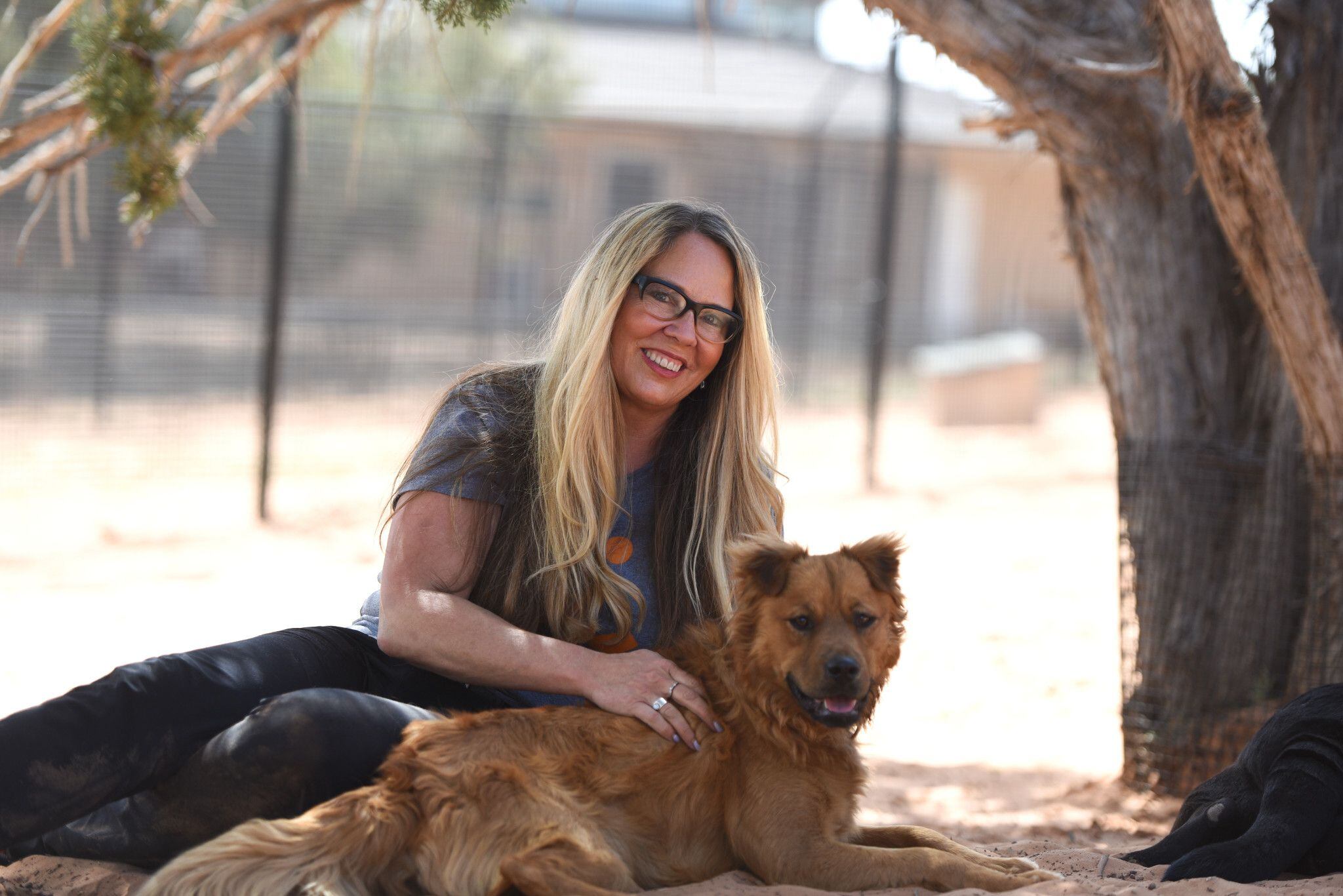My name is Julie Castle. I am the CEO of Best Friends Animal Society and I’m writing this to declare Best Friends’ opposition to the Southern Red Sands (SRS) frac sand mining operation adjacent to Best Friends Animal Society headquarters in Kanab, Utah. We also oppose the Kane County, Kanab City and Kane County Water Conservancy District support of the SRS proposal. SRS is a Salt Lake City based LLC with undisclosed backers who are prepared to invest millions in mining leases and claims, processing facilities and mining equipment.
I am a proud Utahan through and through. My great grandfather, David Marshall Stuart arrived in the Salt Lake Valley in 1847 with the first wave of pioneers as part of the Abraham O. Smoot/George B. Wallace Company. Since then my family and I have called this great state of Utah home.
I was fortunate to attend Southern Utah University, during which time I interned in Washington, D.C., for the Senate Republican Conference, where my “beat” was covering the White House. I then interned for Utah Sen. Orrin Hatch as part of his press office. These were invaluable experiences that gave me a behind the scenes look at how government deals are made that effect the rest of us.
Best Friends is one of the three largest animal welfare organizations in the United States with a support base of hundreds of thousands of active members across the country. We are also the largest employer in Kane County and a major contributor to the regional economy. Best Friends provides full time jobs for over 400 Kanab area residents. In 2018 we paid $17.2 million in local wages and invested another $4 million into local goods and services including construction jobs. That doesn’t count any tourist dollars that the 35,000 annual visitors to Best Friends bring to local restaurants, shops, hotels and gas stations, nor does it include the numerous volunteers and visitors who invest in second homes.
We have been voted Harris Poll Interactive, Animal Welfare Brand of The Year for six of the last nine years, a reputation that enhances public interest our work and our unique location in southern Utah’s red rock country.
We are proud to invest in a community that offers so much in return — spectacular beauty, rich history and an unwavering spirit of generosity and integrity among our community members many of whose roots run deep.
However, the health and quality of life of our community is at great risk right now.
SRS has acquired access to 1,200 acre-feet of water/year in leases via rights held by the city of Kanab and the conservancy district. Kane County Planning and Zoning has also waived the project along. Their plan is bulldoze trees and other vegetation and to strip mine sand for use in oil and gas fracking extraction in the Uintah Basin of Utah and the San Juan Basin in New Mexico.
The potential scope of the Kanab-area mining claims held by SRS includes 12,000 acres of environmentally sensitive public land that abuts Best Friends Animals Society’s 3,700-acre animal sanctuary north of Kanab.
As has been documented by a hydrologic study and confirmed by Utah Geological Survey (USG), SRS water extraction will, without question, reduce spring flows that are critical to Best Friends operation as well as reducing the water level in Kanab Creek. As problematic as that is, it pales in comparison to the real threat posed by the scope of the sand mining and the reclamation plan.
The 12,000 Kanab-area acres of the proposed mine is situated in the sand hills that include dune formations, slot canyons and riparian areas. The entire area overlays the upper and lower Navajo Aquifers, the only source of spring and well water for Kanab. The sand hills and dunes are the recharge zone, via rain fall and snow melt for the springs that are primary sources of summer flows in Kanab Creek, the only source of irrigation for Kanab farmers.
Frac sand mining and cleaning is known to release fine silica particulates into the air. These airborne particles will be a significant health risk to hundreds of our community members who work and volunteer at Best Friends, many of whom work outside all day. It will have a profoundly negative impact on our 35,000 visitors and volunteers every year.
Even worse, the SRS reclamation plan involves replacing the strip-mined sand hills and dunes with the unwanted sand, clay and silt mix that has been separated from the desired frac sand through washing with flocculent or chemical cleaner that separates out the unwanted material. The flocculant, polyacrylamide, while nontoxic itself, can break down in the environment into acrylamide which is a neurotoxin and is classed as a probable carcinogen. So, a mix of clay, silt and rejected sand, coated in a potential neurotoxin is what will be spread across 12,000 acres of the Navajo aquifer. This area is also a pristine recreation area for off road vehicles, hiking, hunting and grazing.
Rainfall and snowmelt that seeps through this layer can carry this poison into our water supply and that of the city of Kanab. It stands to eventually contaminate our springs and our wells. Are we willing to compromise the health and well-being of our community members, young and old, just so a few remote investors can profit at our collective expense?
So what exactly is the value proposition of this mining operation for our community? SRS is offering 40 shift jobs and $150,000 - $391,000 per year to the city in water leases, depending on actual use, in exchange for risking the health of our citizens, reducing spring flows, stripping away the sand and vegetation from undisturbed wildlife habitat and a popular recreation area, contaminating the aquifer and threatening the viability of the county’s largest employer which provides more than a $21 million annual financial infusion into the local economy. How does any of this make sense?

Julie Castle is chief executive officer of Best Friends Animal Society.































